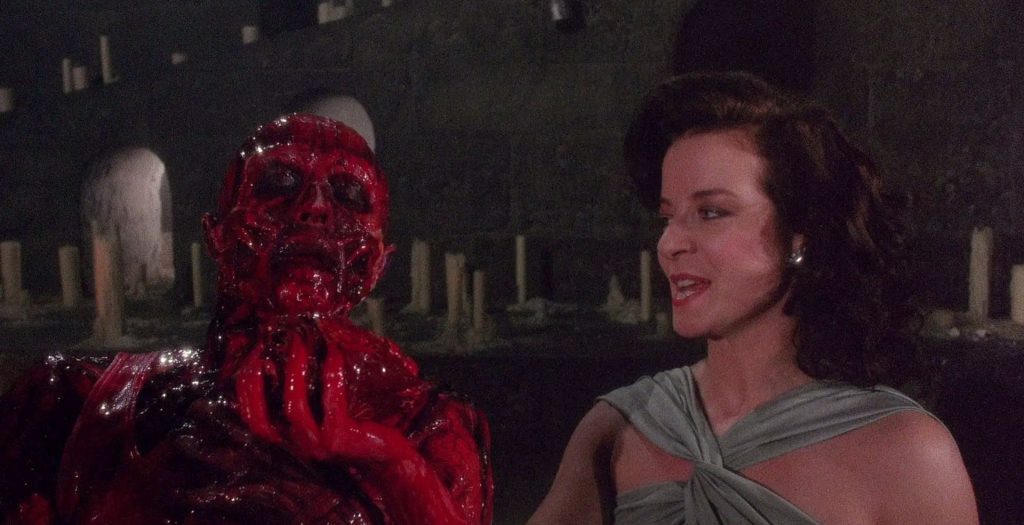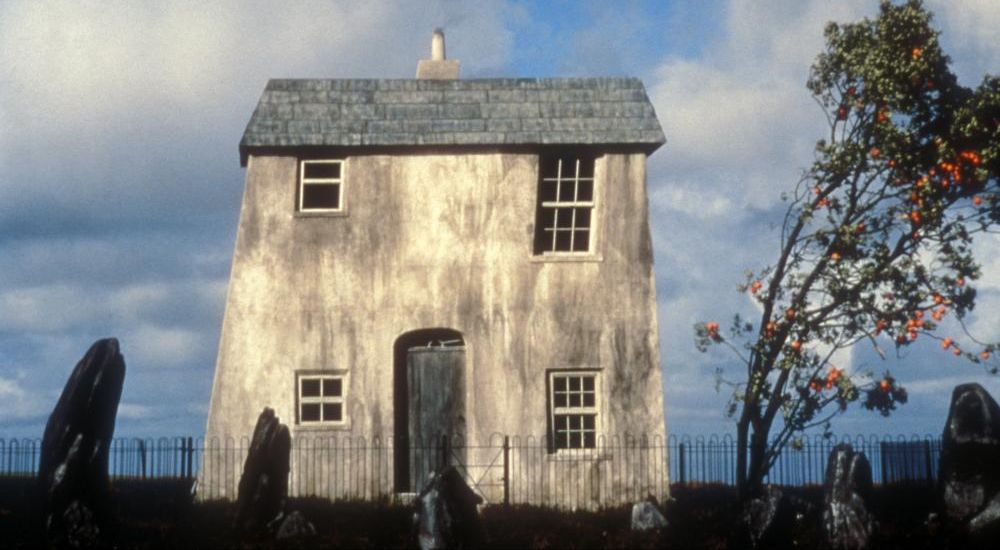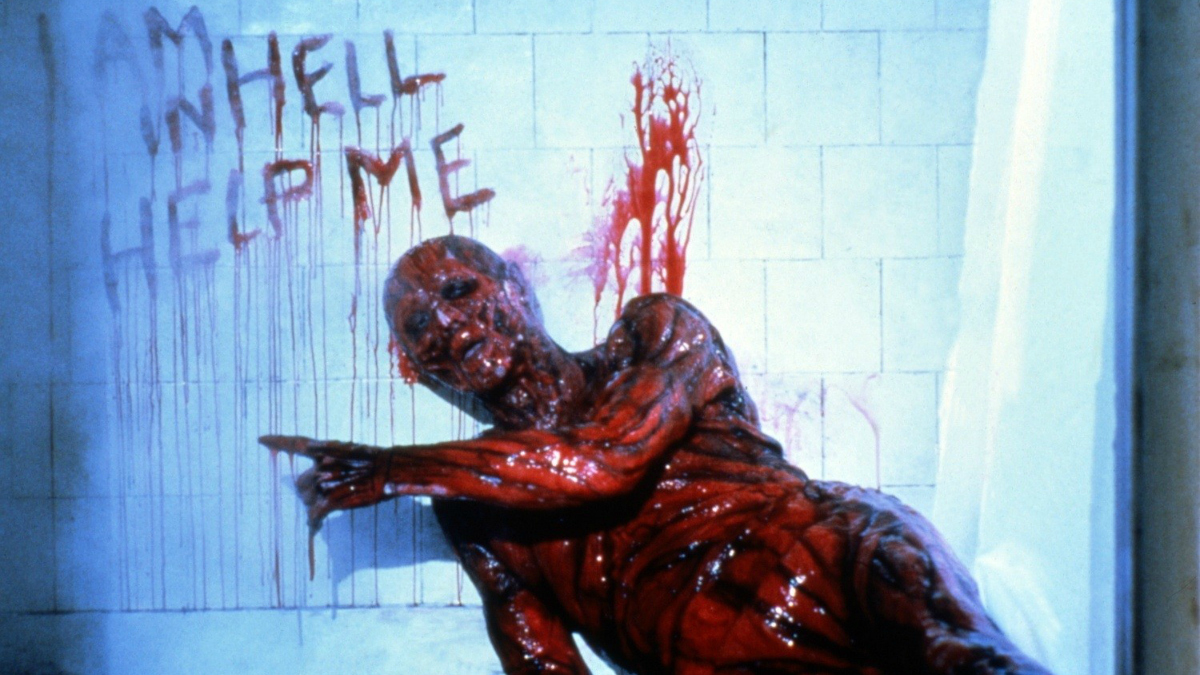Hellbound: Hellraiser II
It is not easy to produce a good, “true” horror film. Too many directors nowadays rely on killing an endless series of teenagers (no matter however imaginatively it may be done) or lightening the tone of the film with humour as in ‘Reanimator” – not that this means the film is necessarily bad, of course, but it’s difficult to be truly scared when you’re laughing or playing “Spot the Next Victim”.
“Hellraiser” was a rare exception, so not surprisingly the news that a sequel was planned was both good and bad news – given that the original was a huge leap ahead of anything else in the field, woukld they be able to maintain the standard, or even improve? Unfortunately, the answer is ‘No’. In some ways, it is better than the original, but overall, it is less frightening and is not a truly worthy successor.
The plot concerns Kirsty, the survivor of the first ilm. She wakes up in a psychiatric hospital, to find, not surprisingly, that no-one believes her story about pin-heads, peeled men and her step-mother cLaw—hammering people to death. No-one, that is, except for Dr. Channard, who runs the hospital. He has a nice collection of Lament Configuration puzzle boxes so when he hears about the matters that Julia died on, he has \it brought round to his house and ‘borrows’ an inmate from the hospital. This poor person is given a razor blade to play with, and the predictable result follows. Julia returns, minus her skin, and a few more residents of the asylum are slaughtered to provide her with a new one.
Channard then gets Tiffany, a girl obsesses with puzzles, es to solve one of his Lament Configurations, and the gateway to Hell is opened. Meanwhile, Kirsty has seen an apparition of her father pleading for help; along with Dr. Channard, she also makes the descent into Hell, but to seek him…

Nice story, so what went wrong between the idea and the screen? It’s the dialogue that’s mostly responsible — it varies from sounding ridiculous and banal, causing the audience at the showing I saw to giggle now & then. The acting didn’t help either. Ashley Lawrence never struck me in the first film as being a great actress, and she hasn’t improved much gince then. She isn’t the worst on view – that honour goes to Dr. Channard’s assistant ( let’s not mention his name, it’d only embarrass him), who succeeds in being totally unconvincing. Fortunately, he is killed mid—Way through the film, sparing us further agony. The only person to come out with any credit is Imogen Bopfimaifi who plays Tiffany, but she has the benefitnof being nearly mute, and so avoids the worst excesses of the dialogue.
What rescues the film is the stunning visual side. Hell looks like a huge painting by M.C. Escher, full of endless corridors, archways and bottomless pits. The special effects are absolutely superb – Bob Keen and his team have produced an endless series of magical creations, the most remarkable of which is a new addition to the Cenobite ranks. Nowhere are the effects anywhere less than perfect, from the smallest trickle of blood to the giant Lament Configuration, Leviathan. There are many images to treasure and scenes that will stick in the mind, though how many will escape the censor is yet to be seen — the film has been submitted four times in the States and has been given an ‘X’ certificate, normally reserved for hard-core pornography, four times. How it will fare in Britain, where violence is frowned upon even more, doesn’t bear thinking about.
On balance, the set design, effects and make up just about save the film, and make it into something worth going to see. I hope that the film IS a success, if only so that Clive Barker can be asked to return for “Hell on Earth – Hellraiser III” and we can see what his dark imagination can produce when given the opportunity and the budget. Mind you, I wasn’t THAT impressed with “Hellraiser” the first time I saw it, so I’m more than willing to suspend judgement for a little while!
A few other films to look out for in the coming months
The Lady in White (Frank la Loggia). A traditional ghost story, set in the l96O’s (tho‘ it’s difficult to tell) about a boy who just escapes death at the hands of a notorious local murderer, and then starts seeing the ghost of one of the murderer’s earlier victims. For the most part, this is a lovely film, with some nice performances (the boy is played by Lukas Haas, who was in ‘Witness’) and a few pieces of humour tnrown in too. Unfortunately, the special effects are laughably inept, especially the flying scenes, which distract severely from the generally pleasing nature of the film.

Paperhouse (Bernard Rose). British horror film—makers seem to be very interested in the relationship between dreams and reality — this is another example, but it deserves praise for trying a slightly different approach, even though it is not 100% successful. The story concerns a young girl, suffering from a glandular fever type illness, who discovers that her hallucinations are affected, and can be controlled, by a sketch she is drawing. For a while this is great fun – then the visions start to take on a life of her own, and suddenly it isn’t quite as nice anymore. For the first hour, this is an excellent film, far sharper than the muddled and confused ‘Dream Demon‘, and almost up to the level of the great and god-like ‘Hellraiser’. The dream sequences are handled with a lot of style and imagination — the scenes where she is being chased by her dream father are especially impressive. Unfortunately, the pace in the last third slackens severely, and the ending is not brilliant. Nonetheless this remains an impressive film, and it is good to see the British horror film is still alive and well.
Jack’s Back (Rowdy Herrington). Someone is commemorating the 100th anniversary of Jack the Ripper by killing prostitutes on the same days he did. A doctor sees one of his colleagues in circumstances best described as rather suspicious, but before he can report this to the cops, he is murdered. Now, this doctor had a twin brother, who dreamt the whole thing, and he goes to the police – having given them all the fine details of what happened, they do the obvious thing and suspect him. He has to prove that he didn’t do it by catching the real killer. I didn’t find this American thriller especially effective because even I could spot the red-herrings with my negligible detective skill. The plot is reasonable, the acting is nothing special and the direction is pedestrian. In fact, there is very little to mark this out from any one of a hundred similar films. It is entertaining enough, but failed to excite anything more than mild interest in me. Perhaps I’ve overdosed on Jack the Ripper films lately. Avoid, and watch ‘Hands of the Ripper‘ instead.
The Dinner Party Game
12 people (six men, six women) for dinner.
| Men Christopher Lee Salvador Dali Sir John Millais (painter) Tony Benn Phil Oakey (Human League) Myself! | Women Elizabeth Bathory (Countess Dracula) Lady Jane Grey Nastassja Kinski Ilona Staller (Italian MP) Germaine Greer Kate Bush |
Think it would be an interesting evening. Any alternative suggestions?
